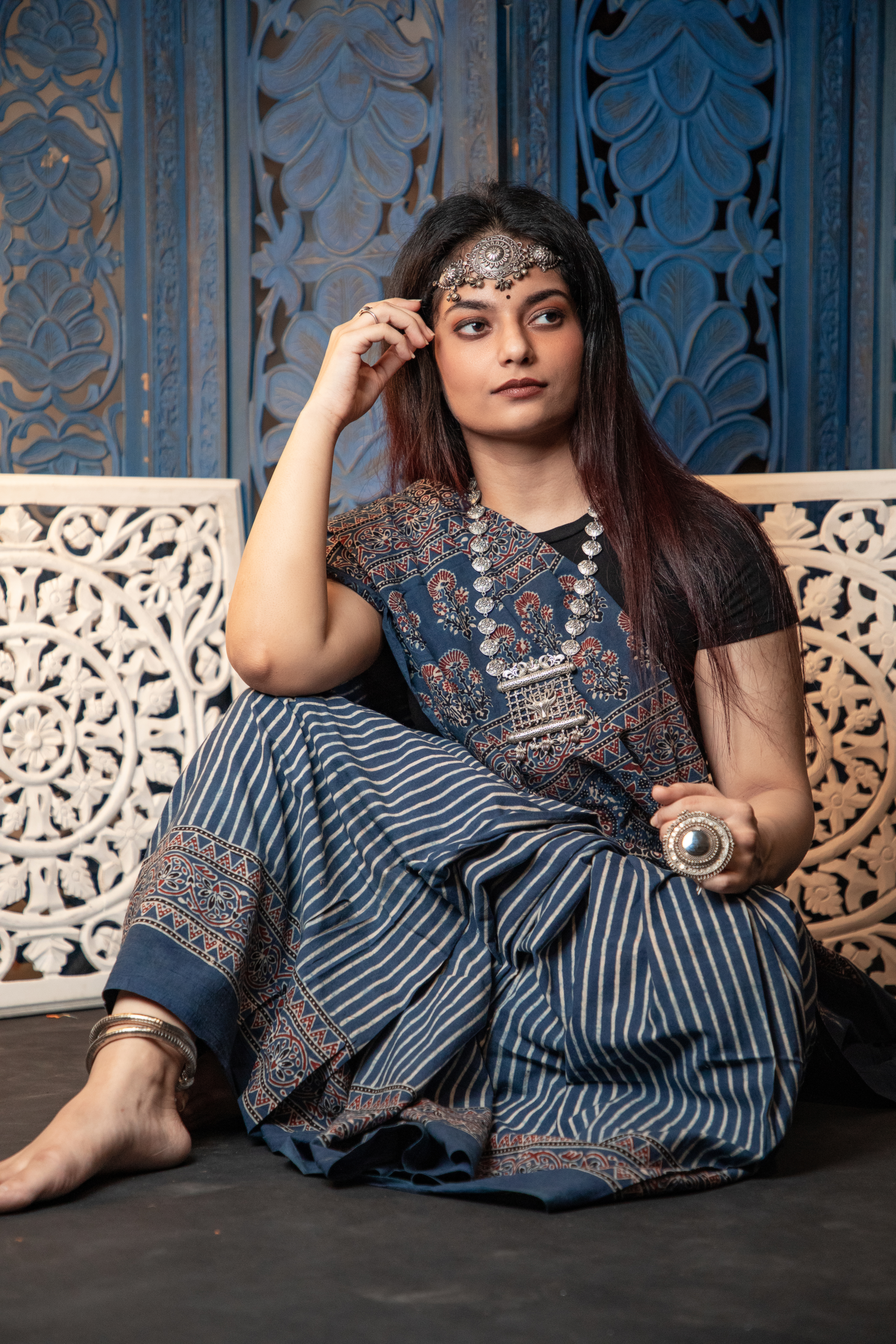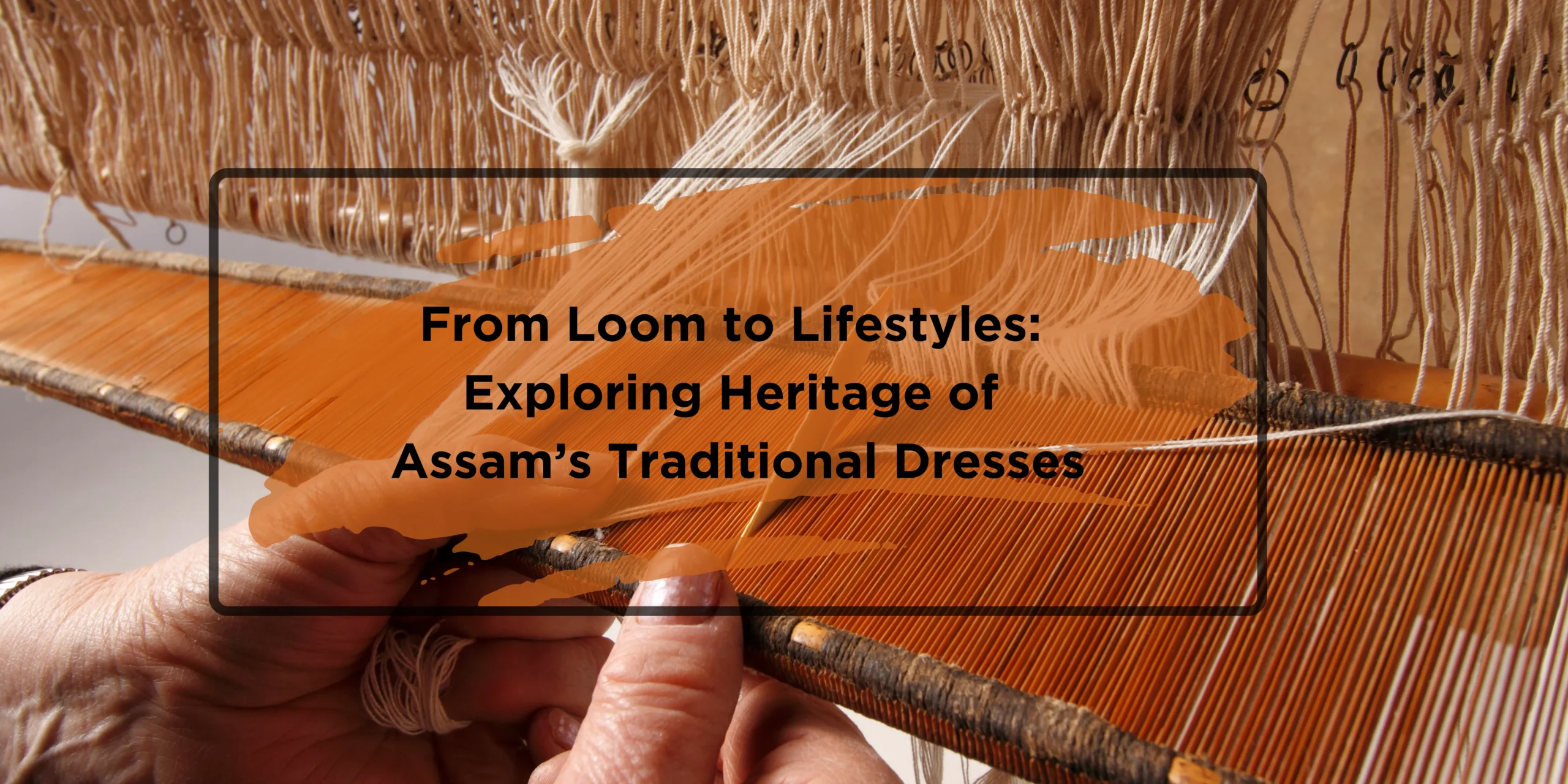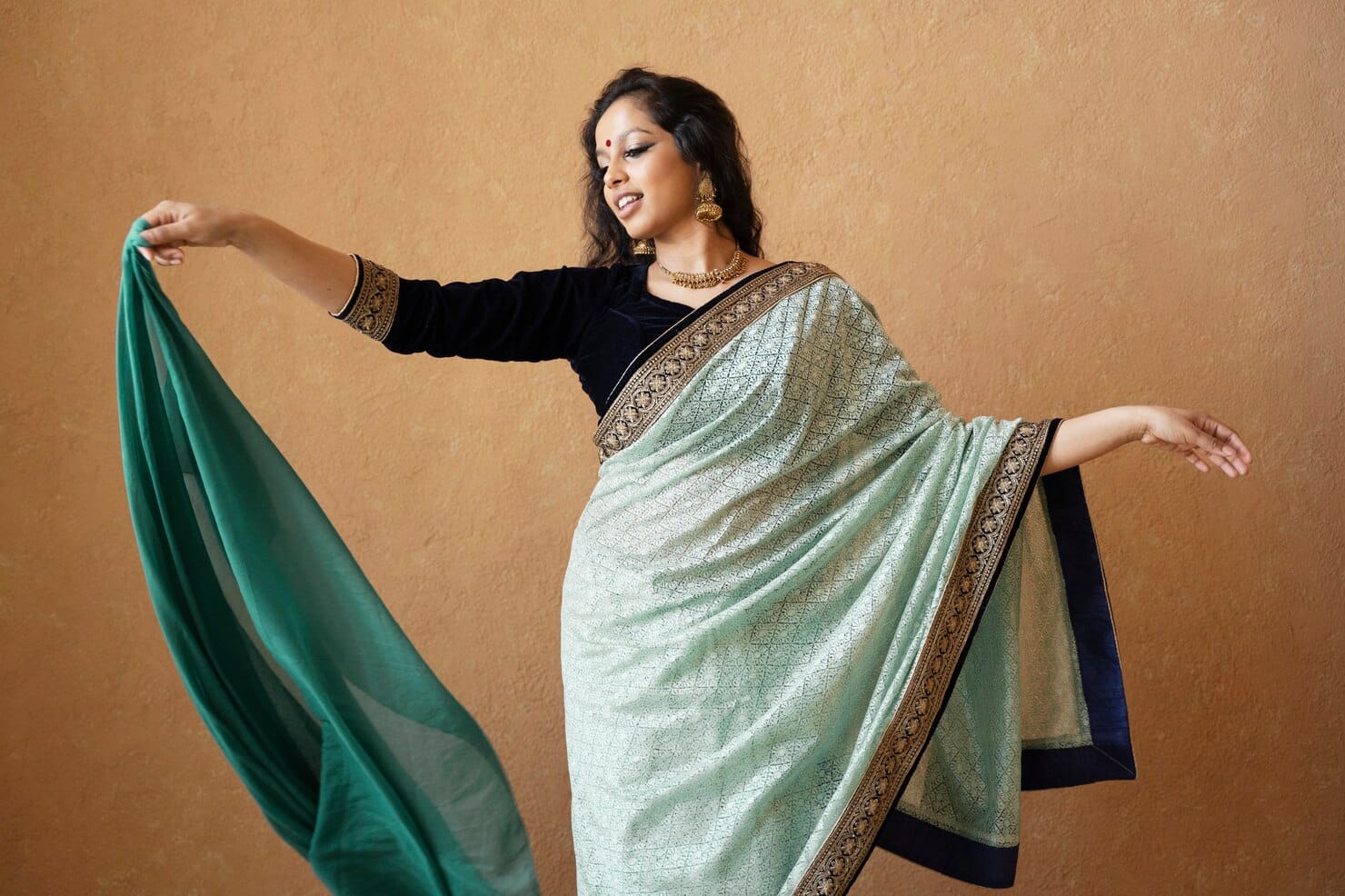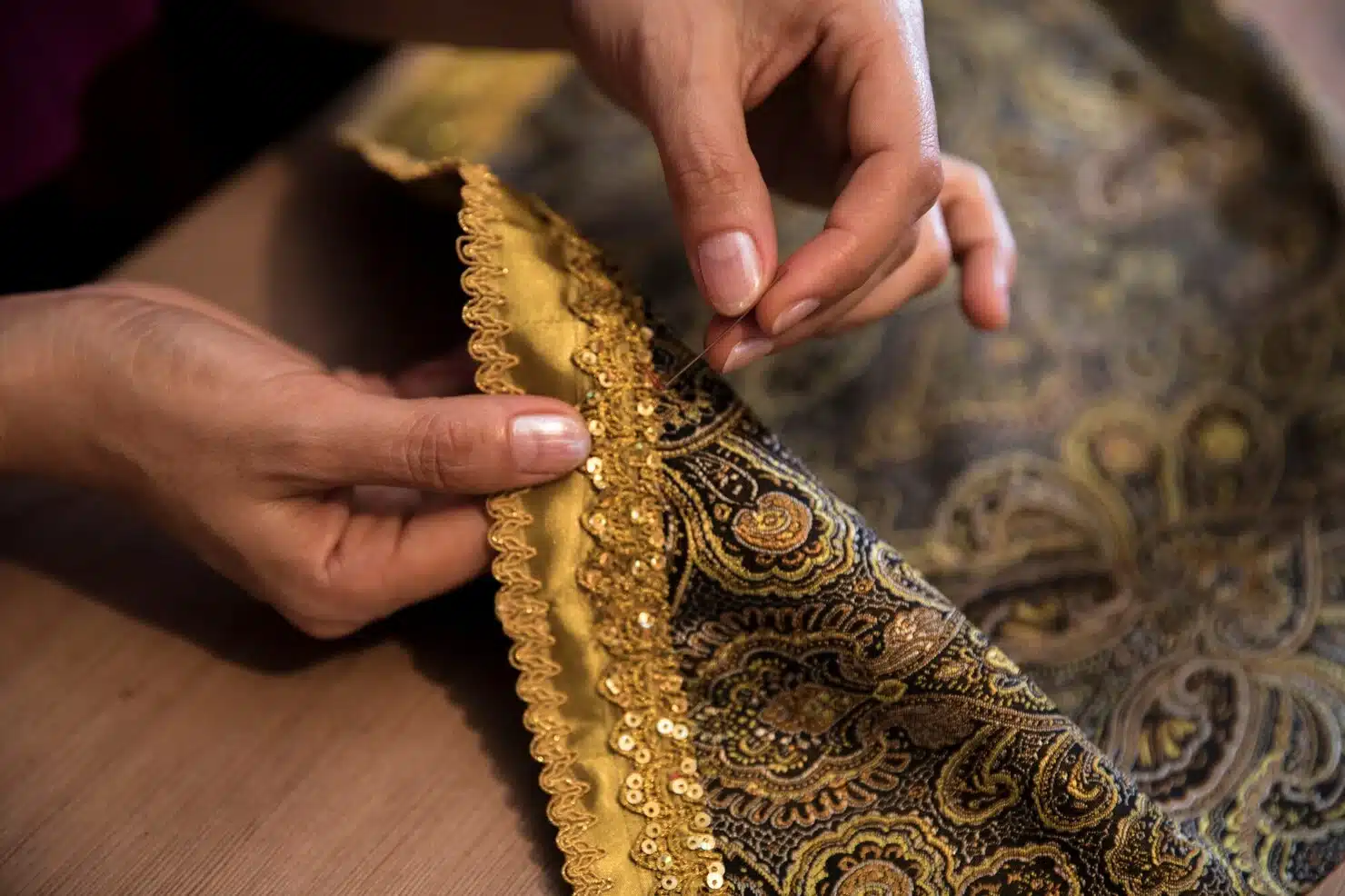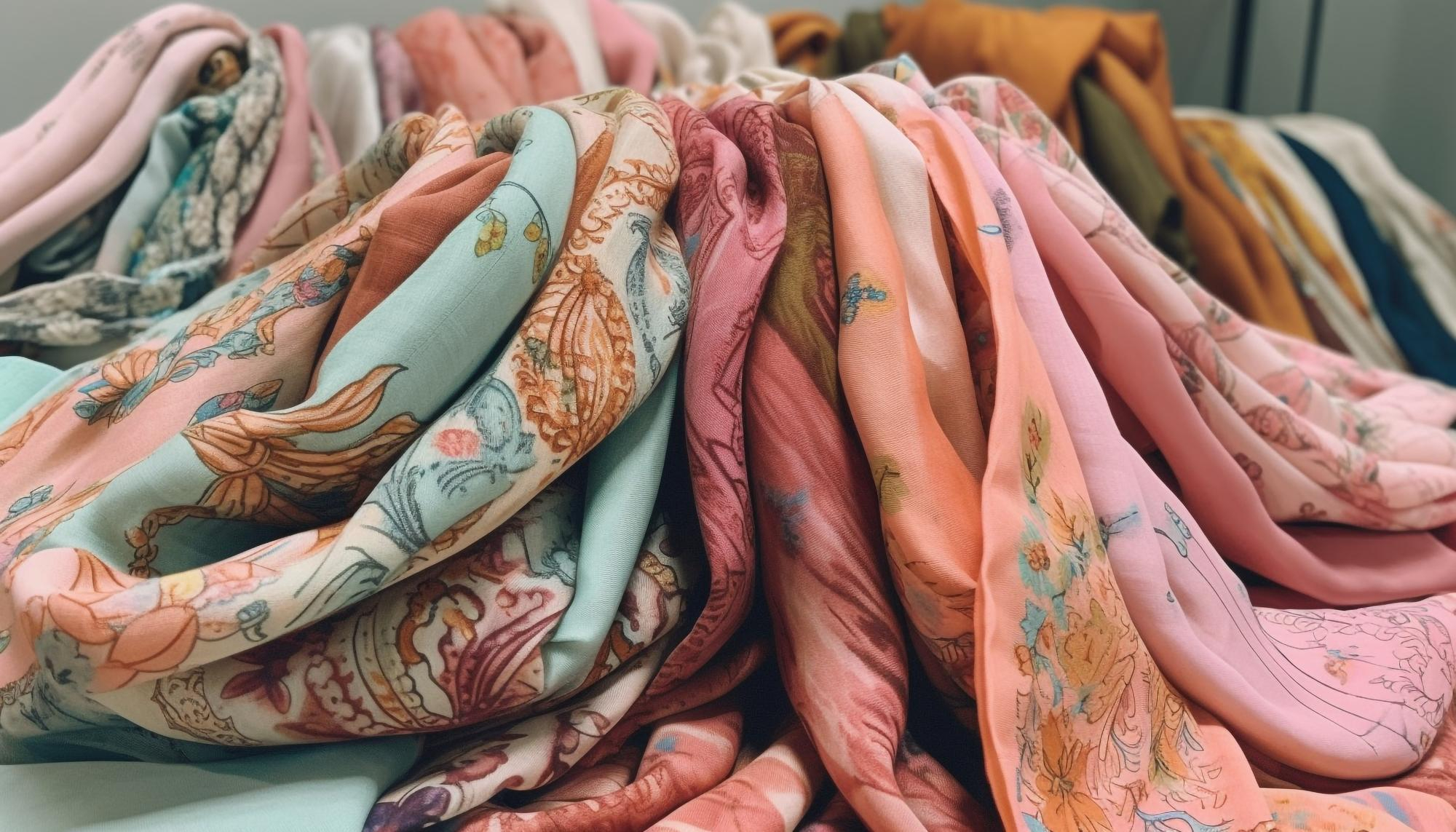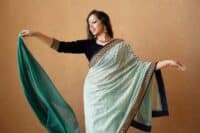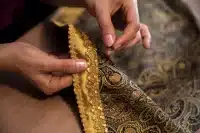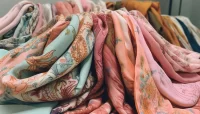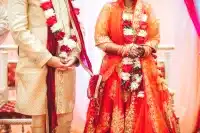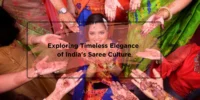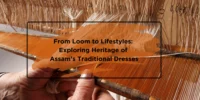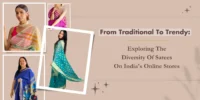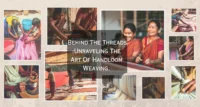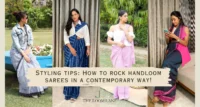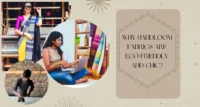Among many treasures, the exquisite handloom textiles of Assam shine as a testament to the state’s artistic finesse and cultural heritage. The Assam dress traditional are more than mere garments; they are intricate tales woven through threads, reflecting the spirit of the land and its people. Let’s unveil the clothes of assam and handloom that we should all be proud of!
Gamosa and Dhoti: A Warm Welcome in Cloth
The gamosa, a finely woven piece adorned with intricate motifs, symbolizes hospitality, respect, and camaraderie. The dhoti, a versatile and elegant wrap-around cloth, completes the ensemble. This cultural assam traditional dress embodies simplicity and comfort, reflecting the uncomplicated lifestyle of the people of Assam. Its practicality, combined with the grace of the gamosa, forms the foundation of Assamese attire.
Sgaopha and Phagri: Stitching Stories in Silk
Sgaopha and phagri bring forth the artistry of Assamese weavers in a vibrant symphony of silk. The sagaopha, a beautifully embroidered upper garment, is reserved for special occasions and cultural festivities. The intricate designs, often depicting flora, fauna, and traditional motifs, make each piece a work of art. Accompanying it, the phagri, a silk scarf, enhances the ensemble’s elegance and completes the look.
Rigdo: Adorning with Elegance
Rigdo, a head ornament, adds a touch of regal splendor to the traditional attire of Assamese women. Crafted from gold and often embellished with precious stones, this unique piece graces the hair, becoming a symbol of grace and heritage dresses. With its intricate design and timeless appeal, the rigdo is not just an accessory; it’s a reminder of Assam’s affinity for intricate craftsmanship.
Risha and Gainthao: A Tradition in Threads
Risha and gainthao, traditional accessories, weave a story of adornment. Risha, a beaded necklace worn around the neck, and gainthao, a waistband adorned with intricate designs, enhance the beauty of the attire and the wearer alike. Passed down through generations, these accessories hold cultural significance, adding a touch of tradition and elegance to the ensemble.
Rigu: Colors and Patterns of Identity
The rigu, a vibrant and colorful scarf, is a statement of identity for the people of Assam. Draped around the neck, it complements cultural assam traditional dresses and adds a splash of colors to the ensemble. Each rigu is a canvas of creativity, featuring unique patterns and designs that showcase the skilled artistry of Assamese weavers. Embracing the rigu means embracing the rich heritage dresses and cultural diversity of Assam.
Mekhela Chador: Elegance in Two Pieces
The pinnacle of Assamese traditional wear, the mekhela chador, comprises two components: the cylindrical skirt (mekhela) and the draped cloth (chador). The mekhela chador is a canvas for a myriad of designs, patterns, and colors, reflecting the rich cultural tapestry of the state. Each fold and thread of the mekhela chador narrates a story of Assam’s history and creativity.
Tongali: Ankle Adornments that Sing
Tongali, ankle ornaments, introduce a musical element to Assamese traditional attire. Crafted from gold and designed with intricate details, they emit a gentle jingle as the wearer moves, creating a melodic rhythm. With every step, these ornaments become a celebration of sound, sight, and tradition.
Aronai: A Necklace of Cultural Identity
For Assamese men, the aronai serves as a cultural emblem. This traditional necklace, made of gold and featuring distinctive designs, is worn during religious ceremonies and cultural events. Its presence not only adds to the aesthetic appeal of the attire but also connects wearers to their roots, carrying the legacy of Assam’s traditions forward.
Conclusion
Cultural assam traditional dress are woven with history, culture, and love. As we explore these attires, we step into a world of artistry and heritage, where every piece tells a tale. From the intricate weaves to the vibrant colors, Assam’s dress traditional is a testament to the dedication of its weavers and the richness of its identity.
FAQs
What is the traditional dress of Assam called?
The traditional dress of Assam is called the mekhela chador for women, and it consists of a cylindrical skirt (mekhela) and a draped cloth (chador). Men often wear the dhoti paired with an upper garment like the sagaopha.
How many tribes are there in Assam?
There are many tribes in Assam such as Garo, Hajong, Hmar, Khasi and Jaintia, Lakher, Maan (Tai speaking), Karbi, Pawi, Syntheng, any Kuki tribes, any Mizo tribes and any Naga tribes. The 9 Plains tribes are Barman, Bodo, Deori, Hojai, Sonowal Kachari, Tiwa or Lalung, Mech, Mising and Rabha.

